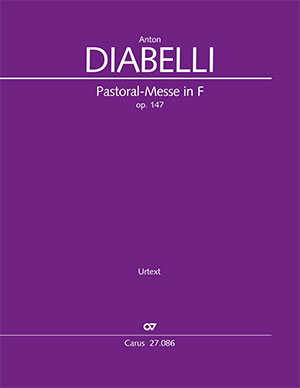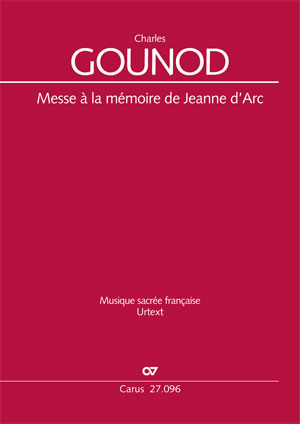
Missa sancta No. 1 E-flat major
Freischütz-Messe WeV A.2
Carl Maria von Weber wrote his Missa sancta no. 1 in E flat major in just two months, despite his heavy workload as Kapellmeister at the Dresden court. The work acquired the nickname "Freischütz Mass" because the composer interrupted work on his opera of the same name in January and February 1818 to compose the mass. And so Weber presented himself to his new employer King Friedrich August I of Saxony as a versatile composer, for as well as his main task of developing a German opera alongside the existing Italian opera at court, his duties also included writing church music.
In the Mass Weber responded to the local conditions in a particular way: he took into account liturgical practice at the Dresden court by adding an Offertorium to the sections of the mass ordinary, setting this as a bravura aria specially written for the Dresden star soprano Filippo Sassaroli. Because of the reverberant acoustics in the Hofkirche, he avoided rapid changes of harmony. Although the Mass was perceived as too "operatic" by critics, it was very well received by audiences and also pleased the King.
• Practically oriented edition based on the sources, performance material available on sale for the first time
• Easy to medium difficulty level
• Text of the Mass includes an Offertorium in accordance with liturgical practice at the Dresden court at the time
-
Composer
Carl Maria von Weber
| 1786-1826
-
Editor
Karin Wollschläger
Reviews
Diese Neuausgabe hat daher auch die Aufführungspraxis im Blick, freilich ist sie gleichfalls sauber und ausführlich ediert und enthält natürlich auch ein Vorwort zur Werkgeschichte.
Das Orchester, 05/2022
Frequent questions about this work
Is the Offertorium “Gloria et honore” which Weber composed for the “Freischütz Mass” also included in the edition?
Do the choral parts divide?
Are the solo parts equal in their demands?
 There are no questions and answers available so far or you were unable to find an answer to your specific question about this work? Then click here and send your specific questions to our Customer Services!
There are no questions and answers available so far or you were unable to find an answer to your specific question about this work? Then click here and send your specific questions to our Customer Services!








